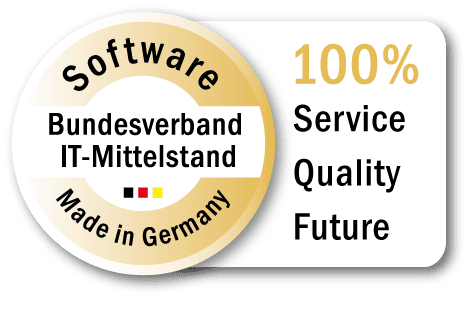SAP offers a comprehensive ERP (Enterprise Resource Planning) software solution and is widely used in manufacturing companies. Whether a simple SAP integration to production can succeed depends heavily on the version and the available interfaces.
Advantages of S/4HANA compared to previous versions
S/4HANA is the latest version of SAP ERP. The name stands for “Suite for SAP High Performance Analytic Appliance”. The name indicates the close integration with the SAP HANA database, a powerful in-memory database platform. S/4HANA offers a number of advantages over previous versions such as R/3 and ECC:
- In-Memory-Technology: With in-memory technology, data is stored and processed in the main memory (RAM) instead of on hard disks. This enables extremely fast data access and processing in real time. This enables extremely fast data access and processing in real time.
- Fast Data Processing: Thanks to in-memory technology, complex queries and analyses can be carried out in a matter of seconds, which speeds up decision-making and business processes.
- Massive parallel processing: SAP HANA uses the capabilities of multi-core processors and enables the parallel processing of large volumes of data.
- Cloud-based: SAP S/4HANA can be implemented both in the cloud and on-premises to meet the different needs of companies.
SAP Interfaces for integration of external OT/IT systems
SAP offers various interfaces for the integration of external OT/IT systems, which have been continuously developed and expanded across SAP versions. These determine to a large extent whether a simple integration to production can succeed.
S/4HANA still supports many of the outdated interfaces from R/3 and ECC. However, S/4HANA encourages the use of newer technologies to meet the requirements of the digital age.
SAP R/3 Interfaces
- BAPI (Business Application Programming Interface): BAPIs are used to integrate external applications into SAP R/3. They offer a standardized way of accessing and editing SAP data.
- IDoc (Intermediate Document): IDocs enable asynchronous communication for the exchange of structured data between SAP systems and external systems.
- RFC (Remote Function Call): RFC enables external applications to call SAP functions remotely and is often used for real-time integration with SAP.
- EDI (Electronic Data Interchange): R/3 supports EDI standards for the electronic exchange of data with trading partners.
- File-Based Integration: Flat files (e.g. CSV, XML) are often used for batch data exchange between R/3 and external systems.
- User-Defined APIs: The use of technologies such as ABAP (Advanced Business Application Programming) makes it possible to extend R/3 systems with user-defined APIs.
SAP ECC
R/3 Interfaces incl.:
- SAP NetWeaver: SAP NetWeaver offers a comprehensive integration platform in ECC and is frequently used in practice.
- Web services: ECC supports web services, including SOAP and REST, for providing and consuming services.
- SAP PI/PO (Process Integration/Process Orchestration): SAP PI and PO are middleware solutions that enable more complex integration scenarios with multiple systems.
- OData Services: OData services provide data and functions for external software applications. These RESTful web services are user-friendly and facilitate integration.
SAP S/4HANA
ECC Interfaces incl.:
- SAP Cloud Platform: SAP Cloud Platform Integration (formerly known as SAP HCI – SAP HANA Cloud Integration) enables the seamless integration of S/4HANA with other cloud-based applications, services and platforms. It offers a range of preconfigured integration services and adapters.
- SAP HANA database connection: S/4HANA supports the connection of external systems to the HANA database via various integration mechanisms and standards. These include RESTful Web Services, OData (Open Data Protocol), JDBC (Java Database Connectivity), ODBC (Open Database Connectivity) and more. Thereby, integration is comparable with other relational databases.
Advantages of combining SAP and i-flow
The combination of i-flow and SAP enables the seamless integration of various OT and IT systems into the SAP system landscape, including machine controls and sensor data. i-flow serves as a data processor as well as a read and write link.Other examples are:
- Automate Business Transactions : Automation of SAP transactions based on machine and process data, e.g. for the automatic confirmation of production orders and materials.
- Traceability: i-flow offers the option of enriching OT data (e.g. process data) with data from SAP (e.g. serialized BOM) in order to implement requirements for tracing product and process data.
- Inventory management: SAP provides inventory management capabilities, while i-flow supports accurate inventory tracking and updating using data from the factory.


